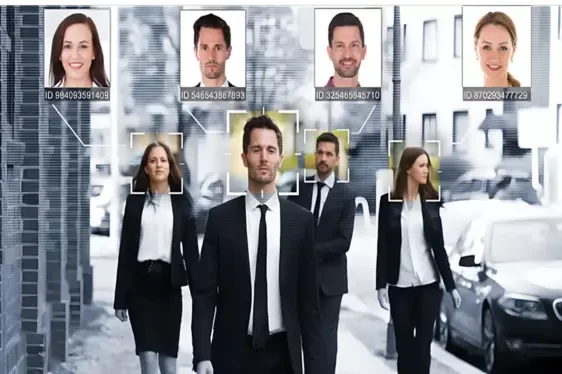We can recognize personally acquainted faces at 380 milliseconds after the presentation and unfamiliar faces at 460 milliseconds, according to various research.
Based on the data recorded in the faceprint, facial recognition technology maps facial traits and assists in identifying a person. This biometric system compares the saved face print with the live image using deep learning algorithms.
Face recognition data collection requires various methodologies, in this blog we will be learning about the different aspects of facial data and how it will help in building the models for biometric applications.
What is facial data recognition and how it work
It is a biometric identification technique that employs the bodily measurements of the subject, the face, and the head to confirm the subject’s identity using their facial biometric pattern and data. To identify, verify, and/or authenticate a person, the technology gathers specific biometric data from each person linked to their face and facial expression.
Face data collection process for biometric applications
Data collection for facial recognition systems can be done in a variety of ways. Here, we list the most popular options.
- Manual face data collection
Datasets that are manually prepared are more perfect and work as a direct and genuine source of data for facial recognition, The GTS data collection team works on the field and visits various people who are willing to share the biometrics for the data analysis.
- Collection of packaged, widely available faces
These datasets were produced by a third party and are available for use right away. They are immediately downloadable and easily accessible online.
- Using crowdsourcing to obtain face image data
Working with the public to compile new face picture datasets is a component of the crowdsourcing approach. If done internally, the business must create a website where people may register, apply for data-gathering tasks, and submit their data in exchange for payment.
You can modify and scale face image datasets by communicating your needs to the service provider.
- Automatic face image data collecting
After the first setup, this doesn’t need human involvement. can continuously capture face photographs without human mistakes.
- Internal face picture data gathering
The group will need to invest in cameras, additional lighting gear, and contributors to shoot the photos. increased data protection Excellent for work with a confidential nature. The method of gathering the data can be more tightly managed. The crew is free to use any cameras, anyone who wants to contribute, and any location.
By collecting picture data internally, a corporation may fully control the data and lower its risk of future data-related legal action.
What different kinds of biometric identification technology are there?
- Checking fingerprints
Incorporate various fingerprint samples to ensure model robustness across demographics and environmental conditions for accurate recognition. Annotate fingerprint data accurately with metadata for precise recognition in diverse real-world scenarios.
- Comparing DNA
The technology involves sequencing DNA in a lab and comparing it to samples stored in a database.In identifying genetic variations and similarities, is crucial for understanding evolutionary relationships, diagnosing diseases, and developing personalized medicine.
- Recognizing eyes
Eye recognition analyses vein patterns in the retina or iris features to find a match and identify a person. It involves analyzing features like iris patterns or eye contours, crucial for biometric authentication systems and enhancing security measures.
Uses of facial data by AI/ML models
With the popularity of facial recognition increasing, it’s unsurprising that numerous industries see potential in the technology. There are several uses for facial recognition software, ranging from law enforcement to airport security to smartphones and other consumer technology.
- Airport safety
Airports all across the world employ facial recognition technology using data collection for AI/Ml models to get the proper facial data.
- Authorities in the law
Facial recognition police work is getting more and more common. To find and confirm people of interest, law enforcement organizations employ a variety of databases, similar to the speech data collection for AI/ML models for legal procedures, the law authorities use facial datasets for recognition in biometrics.
- Disease detection
In their brief investigation, the racial recognition system had a 96.6% accuracy rate in identifying the illness.
How does facial recognition function?
As facial recognition technology advanced, other techniques to map faces and retain facial data appeared. Each with various degrees of accuracy and effectiveness.
- Conventional facial recognition
Conventional facial recognition systems analyze facial features for identification. It playing a crucial role in security, surveillance, and authentication applications across various industries and sectors.
- Using 3D facial recognition
To capture the face’s contour with greater accuracy, the 3D facial recognition system uses sensors.
Face ID, which uses 3D facial recognition to identify its user, is a feature of the Android and ios operating systems.
- Facial recognition with Biometrics
Face recognition technology can become much more accurate thanks to a growing field called skin and face biometrics.
Final thoughts
Effective data collection is pivotal for robust face recognition models. Diverse datasets, meticulous annotation, and advanced techniques ensure accuracy and reliability, enabling widespread adoption across industries.







